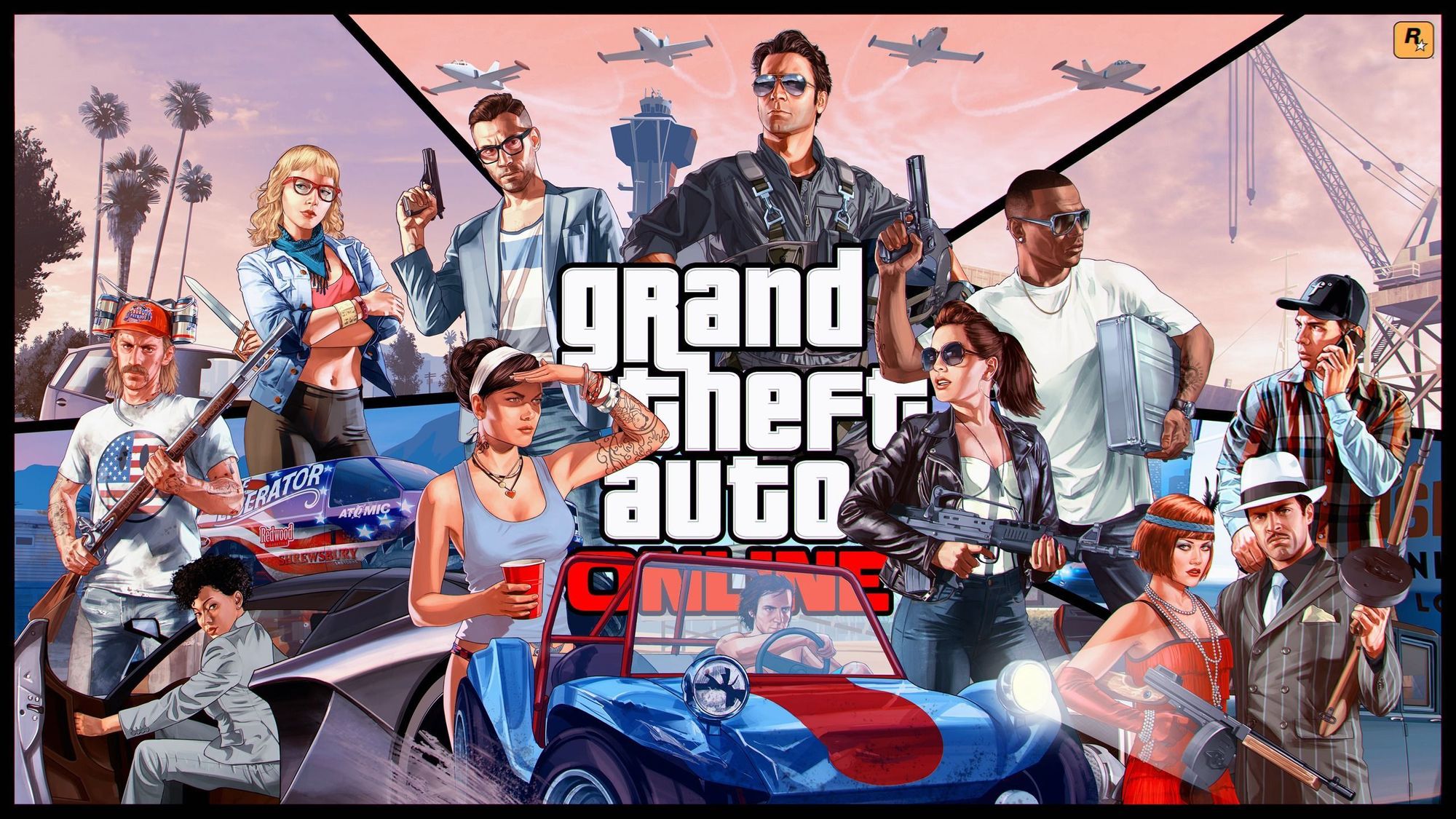
The Grand Theft Auto (GTA) series, a cultural phenomenon in the gaming industry, has taken players on a thrilling ride through the virtual streets of various fictional cities. Since its inception in 1997, the franchise has undergone a remarkable evolution, pushing the boundaries of open-world gaming and setting new standards for storytelling, gameplay, and cultural impact. Join us on a nostalgic journey through the history of GTA games, exploring the milestones, innovations, and controversies that have shaped this iconic series.
The Birth of Grand Theft Auto (1997)

In 1997, DMA Design, now known as Rockstar North, released the first Grand Theft Auto game. This top-down, 2D perspective game introduced players to Liberty City, a sprawling metropolis ripe for criminal activities. The player, taking on the role of a nameless criminal, embarked on a series of missions, marking the beginning of the franchise’s reputation for non-linear gameplay and a sandbox world.
The game’s novel approach to gameplay, allowing players to freely roam and engage in criminal activities, laid the groundwork for what would become a groundbreaking series. Although primitive compared to its successors, the first GTA game set the stage for a revolution in open-world gaming.
Grand Theft Auto 2 (1999): Pushing Boundaries

Building on the success of the first instalment, Grand Theft Auto 2 elevated the gameplay by introducing multiple criminal gangs and expanding the fictional city setting to Anywhere City. The sequel embraced a more futuristic and dystopian atmosphere, laying the groundwork for the franchise’s willingness to experiment with different tones and themes. The introduction of gangs added a layer of complexity to the gameplay, with players having to navigate the dynamics between rival factions. This instalment demonstrated the series’ commitment to pushing boundaries and experimenting with gameplay mechanics.
Grand Theft Auto III (2001): The Revolution

The real revolution came with the release of Grand Theft Auto III in 2001. This instalment marked the shift to a fully realised 3D open-world environment, Liberty City, providing players with unprecedented freedom and immersion. The game’s protagonist, Claude, navigated the criminal underworld in a narrative-driven experience that blended cinematic storytelling with open-ended gameplay.
GTA III was a game-changer, not just for the series but for the entire gaming industry. The transition to 3D graphics, coupled with the freedom to explore a living, breathing city, set a new standard for open-world gaming. Players were no longer confined to linear missions, opening up a world of possibilities.
Vice City (2002) and San Andreas (2004): Expanding the Universe
Rockstar continued to push boundaries with the releases of Vice City and San Andreas. Vice City, inspired by the Miami of the 1980s, embraced a vibrant and nostalgic atmosphere, while San Andreas took players to the fictional state of the same name, offering a vast, diverse landscape that included cities, countryside, and even gang-controlled territories. The scope of the game expanded, introducing RPG elements, customizable characters, and a broader range of activities.

Vice City’s homage to the ’80s and its memorable soundtrack added an extra layer of immersion, while San Andreas’ expansive map and diverse environments solidified the series’ reputation for delivering epic gaming experiences. These instalments showcased Rockstar’s commitment to creating not just games but virtual worlds.
Grand Theft Auto IV (2008): A Grittier Tale

In 2008, GTA IV shifted to the fictional Liberty City again but with a darker and more realistic tone. The game’s protagonist, Niko Bellic, navigated a narrative filled with moral ambiguity and societal critique. GTA IV realistic physics, improved graphics, and a more sophisticated storytelling approach marked a departure from the series’ previous tone, offering players a more mature and nuanced experience.
GTA IV was a departure from the more lighthearted and over-the-top nature of its predecessors. It delved into deeper themes, exploring the immigrant experience and the pursuit of the American Dream. The game’s narrative complexity and emotional depth set a new standard for storytelling in open-world games.
Grand Theft Auto V (2013): Redefining Open-World Gaming
Grand Theft Auto V, released in 2013, stands as a pinnacle of the series’ evolution. Set in the sprawling and fictional state of San Andreas, the game featured not one but three playable protagonists—Michael, Franklin, and Trevor—each with a unique perspective and storyline. The open-world was more vibrant and dynamic than ever, with a narrative that explored contemporary issues such as fame, wealth, and the American Dream. GTA V became a cultural phenomenon, breaking records and setting new standards for the gaming industry.

The introduction of multiple protagonists allowed players to experience the narrative from different angles, providing a deeper and more engaging storytelling experience. The expansive world of Los Santos and the surrounding areas became a playground for players, with heists, activities, and a living, breathing ecosystem of AI-driven characters.
GTA Online: The Living, Breathing World

Alongside GTA V, Rockstar introduced Grand Theft Auto Online, an ambitious multiplayer component that transformed the game into a living, breathing online world. Players could create their characters, undertake heists, and explore the expansive landscape of Los Santos with friends. GTA Online’s continuous updates and expansions turned it into a platform that extended the life of GTA V well beyond its initial release.
GTA Online marked a significant shift for the series, emphasising the ongoing nature of the gaming experience. It allowed players to engage with the world of Los Santos in a persistent online environment, creating a dynamic and ever-evolving ecosystem of player-driven events.
The Cultural Impact

Beyond its gameplay and technical achievements, the GTA series has left an indelible mark on popular culture. The games have been the subject of debates on violence in video games, and their soundtracks, filled with licensed music from various genres, have become iconic. The humour, satire, and social commentary woven into the narratives have contributed to the series’ enduring appeal.
GTA’s cultural impact extends beyond the gaming world, with references in movies, music, and even in discussions about the role of video games in society. The series’ ability to reflect and satirise contemporary culture has made it a touchstone for discussions about the intersection of art and entertainment.
Controversies and Criticisms
The success of the GTA series has not come without its fair share of controversies. The games’ portrayal of violence, crime, and mature themes has often drawn criticism and calls for censorship. However, Rockstar has staunchly defended the artistic integrity of its creations, arguing that the games are a reflection of the complexities of modern society.
The controversies surrounding GTA have sparked debates about the responsibility of video game developers and the impact of virtual experiences on real-world behaviour. Despite criticisms, the series has remained unapologetic in its commitment to pushing boundaries and exploring mature themes in a fictional context.
The Future of Grand Theft Auto
As of my knowledge cutoff in January 2022, the future of the GTA series remains a mystery. Rockstar has teased the development of Grand Theft Auto VI, generating anticipation among fans for the next evolution of the franchise. Whether it will build on the success of GTA V or introduce entirely new innovations, one can only speculate on the direction Rockstar will take.

The anticipation for GTA VI reflects the series’ enduring popularity and the excitement that surrounds each new instalment. Fans eagerly await Rockstar’s next move, hoping for another groundbreaking experience that will redefine the gaming landscape.
In Conclusion
In conclusion, the evolution of the Grand Theft Auto series is a testament to Rockstar’s commitment to pushing the boundaries of what is possible in the world of gaming. From its humble beginnings as a top-down, 2D game to the expansive and immersive worlds of GTA V and GTA Online, the series has undergone a remarkable transformation. As we await the next chapter in the GTA saga, one thing is certain: the legacy of this groundbreaking franchise will endure in the annals of gaming history.





